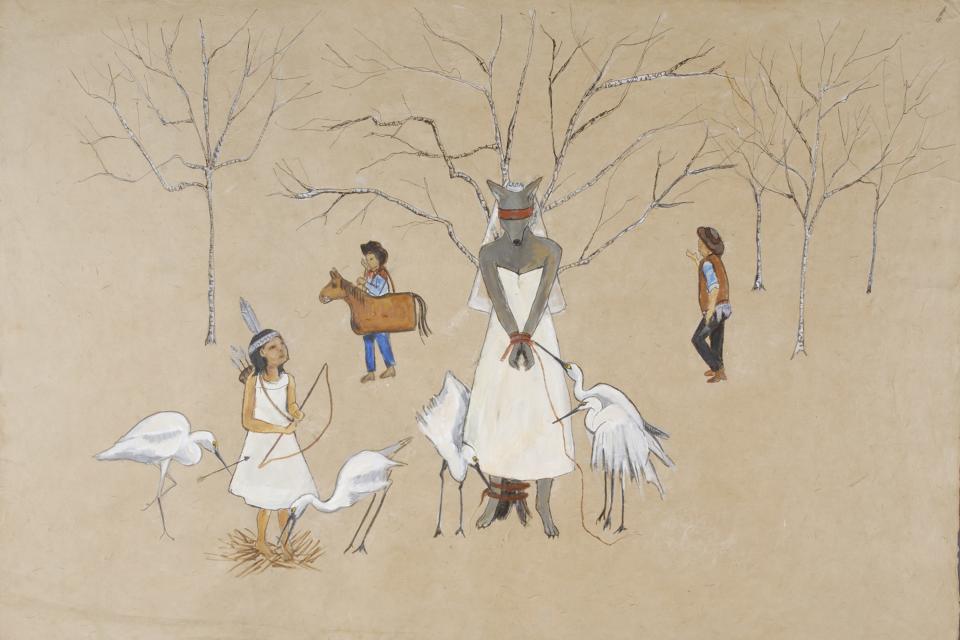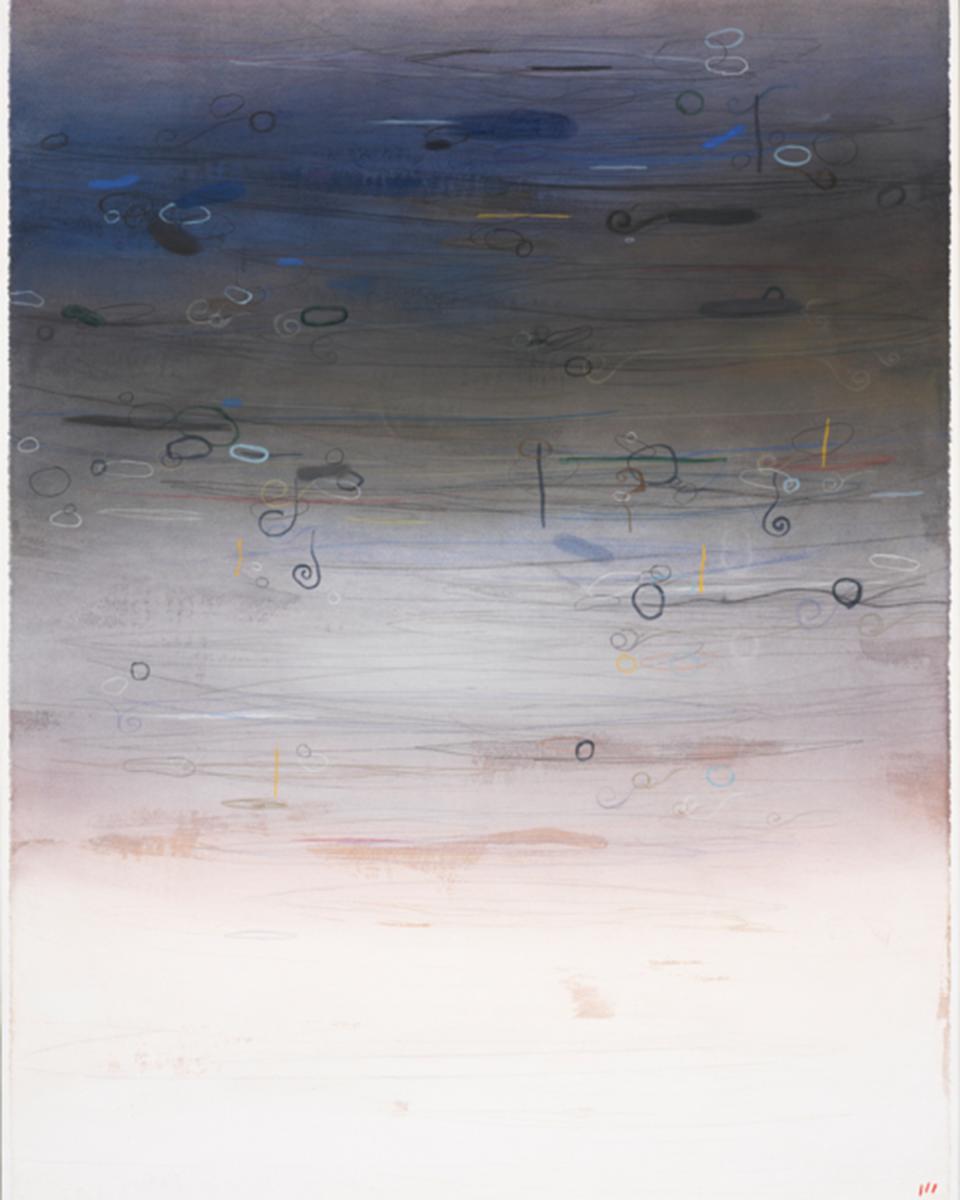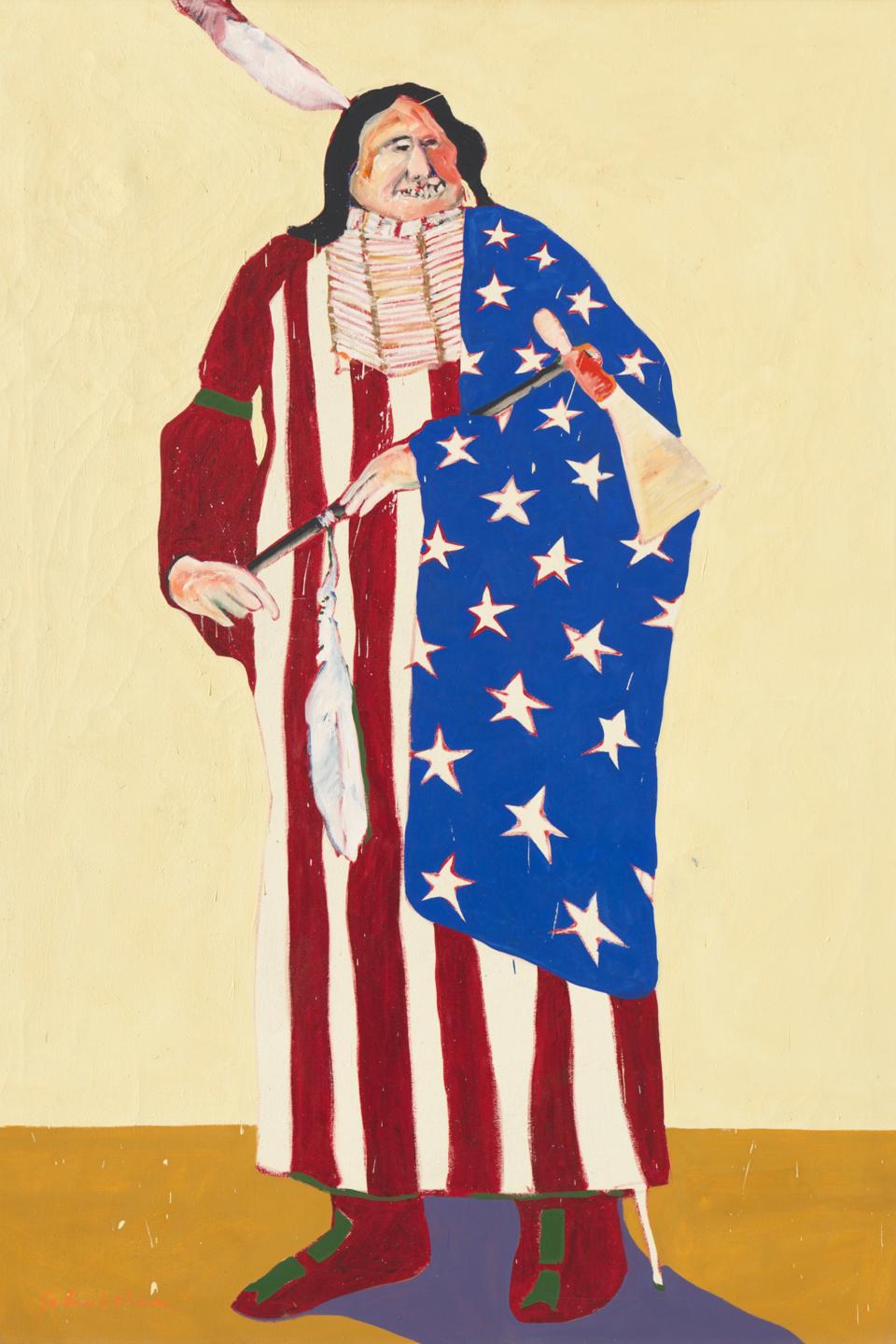Stretching the Canvas Showcases Eight Decades of Native American Paintings
The National Museum of the American Indian’s new exhibition, Stretching the Canvas, is centered around one broad, thorny question: What is Native American art? Many tribes, each with unique aesthetics, are spread out across what is now known as America, meaning that gathering these wide-ranging paintings into one cohesive show is certainly a challenge—yet the new exhibition, which opened this week, does just that. Stretching the Canvas, now showing at the museum’s George Gustav Heye Center in New York, features pieces ranging over eight decades, including 30 different artists and 39 works overall.
“This show is notable for its broad historic scope and engagement with American art history,” said the museum’s lead curator, David Penney. The Native artists in the show, based in cities from New Mexico to New York, are bound here by a common theme: reclaiming and celebrating their culture throughout the various time periods.

Julie Buffalohead. The Confirmation, 2009.
The paintings are organized into five different gallery spaces, starting with work from 1940 and progressing in loosely chronological order. In the “Training Ground” space, the pieces depict how indigenous artists used paintings to reclaim their heritage and traditions following World War I and government repression. Potawatomi artist Woody Crumbo’s Three Eagle Dancers (1935), for instance, showcases the traditional Eagle dance style and its ornate regalia; San Ildefonso Pueblo artist Tonita Peña also explores this in Buffalo Dance (1939).
In addition to these traditional references are more abstract motifs. In the “Cosmopolitans” gallery, the emphasis is on mid-20th-century works that reflect the influx of Native artists to New York City. The result was an explosion of modernism, as seen in Kay WalkingStick’s Homage to Chief Joseph (Chief Joseph #1) (1975)—a gripping, textural work that honors to the notable Nez Percé leader. Or there’s the calming Standing Water by Navajo artist Emmi Whitehorse, who often bases her paintings on the land.

The “Indian Pop” space, meanwhile, illuminates the indigenous Pop art scene that emerged from Santa Fe in the 1960s, particularly following the founding of the Institute of American Indian Arts (a major art school where many Native creatives still cut their teeth today). Several works from Luiseño artist Fritz Scholder, who taught at IAIA, are on display here, including The American Indian (1970), which features a Native man draped with the American flag: a bold message, underscored by the vivid style of Pop art.

Fritz Scholder_The American Indian
Overall Stretching the Canvas is an ambitious exhibition in terms of representing a broad timeline and scope of styles; it also continues an exciting movement in the art world, where indigenous artists are finally being given proper space. It follows two other significant indigenous-focused art highlights this year, including Hearts of Our People, which shone a light on work by indigenous women, and the recent T.C. Cannon retrospective.
Originally Appeared on Vogue

